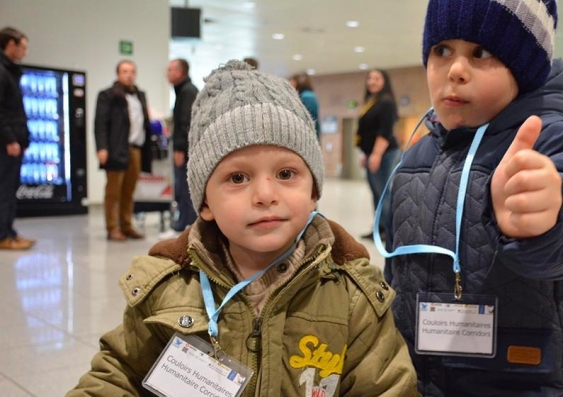The Kaldor Centre’s Safe Journeys and Sound Policy critically analyses the ways people can seek asylum without risking dangerous journeys.

Italy’s Humanitarian Corridors, which supports asylum seekers to settle in Italy. Image: Community of Sant’Egidio
Politically, ‘stop the boats’ has been a winning slogan. But such policy in action is harsh and out of step with Australia’s international responsibilities. It also divides voters, whose debate gets stuck on the question: is there a practical, humane alternative?
In fact, there are examples around the world – including in Australia – of safe ways for people to seek asylum without risking dangerous journeys. Complementary pathways achieve this aim, and also make it easier for government to plan ahead for the housing and educational, employment and social support that newly arrived refugees might need.
UNSW’s Andrew & Renata Kaldor Centre for International Refugee Law today released a new Policy Brief, Safe Journeys and Sound Policy: Expanding protected entry for refugees, which takes an in-depth look at one form of complementary pathways: protected entry.
Protected-entry procedures enable a refugee to apply for protection while still outside the destination country – often at an embassy, consulate or by dealing online or in-person with an official from a safe country.
In a about Safe Journeys and Sound Policy, Kaldor Centre Senior Research Fellow Dr Claire Higgins examines the evidence of how, when and why protected-entry procedures work, drawing lessons from around the world. These include:
- a small special visa program that Australia has operated since the 1980s, to rescue people at risk from within their home countries
- the Orderly Departure Program in Vietnam that resettled more than half a million people between 1979 and the late 1990s
- Brazil’s humanitarian visas for Syrians, providing thousands of asylum seekers the right to travel safely to Brazil and apply for protection as refugees
- Italy’s Humanitarian Corridors, a Nansen Award-winning program from the Community of Sant’Egidio and others, which supports asylum seekers to settle in Italy
The need for such initiatives is at the forefront of next month’s Global Refugee Forum, where the United Nations (UN) will take the first steps arising from the historic Global Compact on Refugees, adopted by more than 180 countries one year ago.

Dr Claire Higgins. Image: Richard Freeman
“Protected-entry procedures are one way that states can make a real difference for people who need protection, while allowing governments to better plan for and share responsibility for refugees,” Dr Higgins says. “That’s why one of the core objectives of the Global Compact is that more countries should offer complementary pathways on a more systematic, organised and non-discriminatory basis.
“These pathways can be an important part of meeting the contemporary challenge of displacement,” Dr Higgins says. “But history shows that to achieve durable solutions, protected-entry schemes must, first, be additional to UN resettlement; second, be part of multi-year commitment rather than one-off; and, finally, they work best when the rules of the program are transparent and offer flexibility.”
The first Global Refugee Forum will take place in Geneva on December 17 and 18, where UN member states are expected to make tangible national commitments – through financial, material and technical support, through more resettlement places and through expanding complementary pathways.
Safe Journeys and Sound Policy brings critical analysis to bear on the discussion, at what the UN Refugee Agency calls this “critical opportunity to … strengthen our collective response to refugee situations”.
Read the full Kaldor Centre Policy Brief, .






